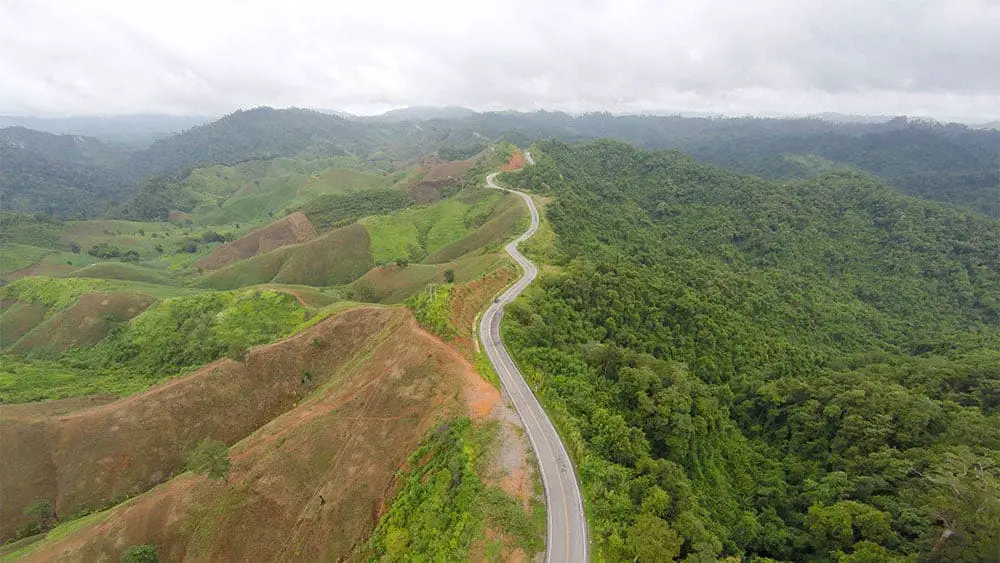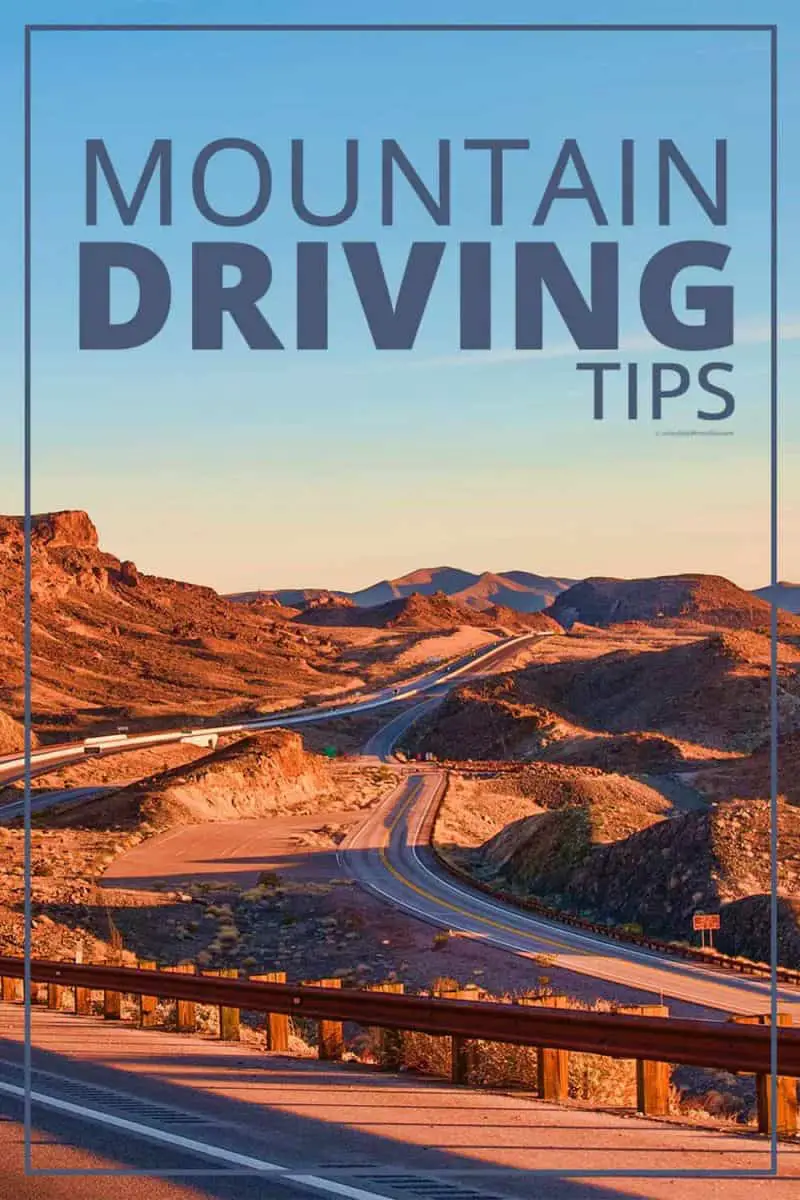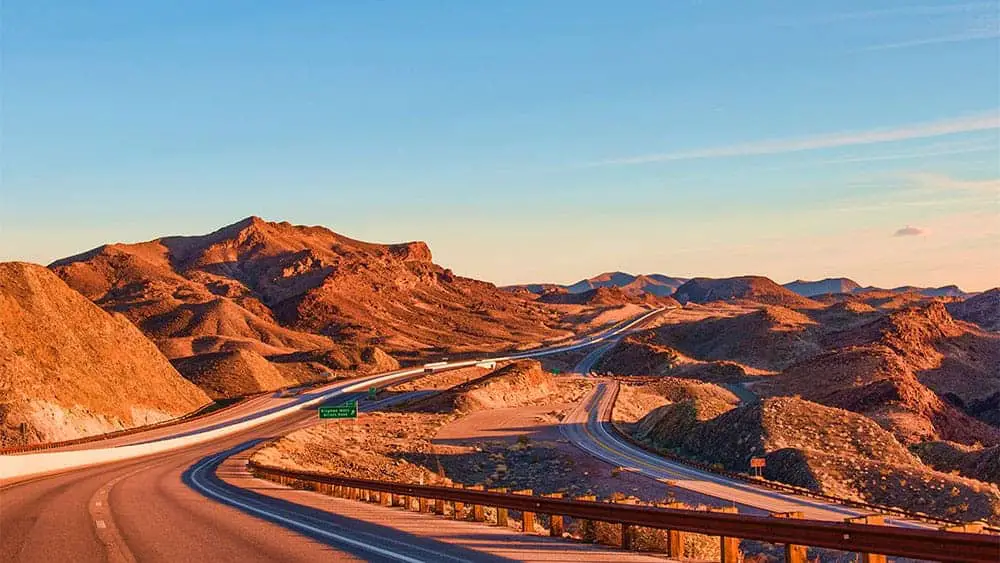Driving through the mountains can be taxing and exhausting on both the driver and the vehicle if not done properly. There are certain road precautions and ways to handle your car differently when in the mountains versus if you are driving on a flat-surfaced road. Ignoring these safe driving tips and not taking action before planning a drive through the mountains can put all passengers and your vehicle in danger.

“When everything feels like an uphill struggle, just think of the view from the top.”
Mountain Driving 101 for your Next Road Trip
Here are our driving tips for what you should do before driving in the mountains
Driving Table of Contents
- Pack Enough Snacks and Water
- Have a Car Emergency Kit
- Drive a Roadworthy Vehicle
- Make Sure the Brake Pads are Good to Go
- Downshift Before Steep Downgrades or Uphill
- Keep Your Lights On
- Maintain the Proper Speed Limit on Mountain Roads
- Avoid Setting the Cruise Control when Driving through the Mountains
- Ensure Your Car Has the Proper Fluids
- Don’t Fly Up or Down the Mountain Roads
- Keep an Eye on the Temperature Gauge
- Don’t Hug the Center Line
- Check the Local Weather
- Take a Break When Possible
- Listen to Your Vehicle
Pack Enough Snacks and Water
When driving long distances, you never know when you might get stranded, especially when travelling through the mountains. There are often long distances between stops and few places to eat along the way. To avoid unhappy, hungry, or dehydrated passengers, make sure you pack plenty of snacks and water just in case you get stranded.
Have a Car Emergency Kit
Always be prepared when you are road-tripping with your friends or family. Pack a car emergency kit for everyone’s safety, ensuring that it includes jumper cables, a gas can, flat tire inflation can, a flashlight, antifreeze, a battery charger, and roadside flares. Also, remember to pack extra blankets, just in case you get stranded during the colder months.
Amazon has lots of car emergency kits for all budgets.


Drive a Roadworthy Vehicle
Please do not attempt taking a questionable old vehicle on mountain roads. Without a roadworthy car, you have a higher chance of breaking down on the side of the road or causing a severe accident. Make sure your vehicle has had a tune-up and can handle extreme conditions.
See our Road Trip Car Check List here.

Make Sure the Brake Pads are Good to Go
Your vehicle’s brakes are going to be tested the most while going down steep grades. Make sure that there is plenty of brake pads left before attempting to travel through steep mountains hills. It won’t be a happy ending if your brakes are gone while travelling down a steep grade at high speed. Also, make sure that you go easy on your brakes by moving at a slower pace.
Downshift Before Steep Downgrades or Uphill
Another way of going easy on your brakes is to downshift into a lower gear before you’re travelling downhill. If you’re in a higher gear, it will cause more wear and tear on your brake pads. Downshifting also allows the engine to do some of the braking for you, instead of relying entirely on your brakes to slow your vehicle down.
Keep Your Lights On
Keeping your headlights on is not only for driving mountain roads at night. Having your lights during the day is not necessarily so that you can see the road better; it’s also a way of making sure other vehicles can see you in inclement weather conditions. Grey vehicles in wet or foggy conditions are almost impossible to see, so it’s best to keep your lights on.

Maintain the Proper Speed Limit on Mountain Roads
Speed limits are set in place for your safety and should be taken seriously. Driving faster or slower than these speed limits will increase your chances of a traffic accident. So slow down, or pull over and stay in the right lane so faster vehicles can pass. Maintaining the proper speed limit may end up saving you some gas mileage too!
Avoid Setting the Cruise Control when Driving through the Mountains
When driving long distances on flat roads, cruise control comes in handy. But turning on the cruise control in the mountains can be dangerous. Cruise control can also lull you and your brain to sleep when you should be on high alert for these conditions.
Each hill and downgrade gives different circumstances on how you should handle the road, and you want to be in full control of the vehicle so you can anticipate each situation.
Ensure Your Car Has the Proper Fluids
Before setting out for a drive through mountainous regions, you want to make sure you have plenty of coolant, windshield washer fluid, and gas in the car. Your vehicle’s engine will already be working harder than usual and will heat up faster than it usually does, so having enough coolant is a good start. Your gas mileage will be higher than it does on flat surfaces, so make sure you’re not gambling on this one and plan on filling the gas tank more often.

Don’t Fly Up or Down the Mountain Roads
It might be fun going faster and coasting downhill without hitting the gas, but this is terrible news for any car engine, not to mention bad for your brakes. It’s also dangerous because it takes a considerable amount of time to slow down your vehicle on a steep grade and can cause a serious accident. Trying to drive uphill at high speed causes unwanted stress to your engine and burns through a lot of gas.
Keep an Eye on the Temperature Gauge
Even in a dependable vehicle, your engine’s temperature gauge might creep higher than usual. If you notice that your car is beginning to overheat, safely pull over immediately at the next rest stop and give your vehicle time to cool down. Continuing to drive while the temperature gauge climbs higher and higher can cause engine damage, a blown head gasket, and melted engine components, which can be costly to fix.
Don’t Hug the Center Line
Don’t drive too close to the centre line while travelling to the top of a hill, or around corners on mountain terrain. It’s difficult to see when you turn the corner, and you never know when other drivers are coming too close to the centre line also, possibly creating a deadly head-on collision.

Check the Local Weather
Make sure that you pay attention to the local weather in the area you are planning to travel through. You don’t want to be caught in a torrential downpour or snowstorm when you’re driving downhill. Hydroplaning downhill is a disaster you can avoid by not travelling during these conditions.
Take a Break When Possible
Whenever you come across a cute town or a gorgeous lookout point don’t pass this opportunity to take a stop and enjoy the scenic views. A rest stop will give you and your vehicle a chance for a break after going up and down in elevation so often. Engines and brakes overheating are huge risks if you choose not to stop once in a while and insist on soldiering on.
Listen to Your Vehicle
Take care while driving and if you notice that your vehicle is whining, putting, or groaning more than usual, take heed of those signals that you should pull over. Failing to do so will keep you from reaching your final destination altogether and put your vehicle in the repair shop.

You may also like these related articles:
– Exploring Sequoia National Park by Car.
– Road trip to Florida – Driving is the affordable way.
– Arizona Road Trip Adventure.
Check out all our pro travel tips here.

